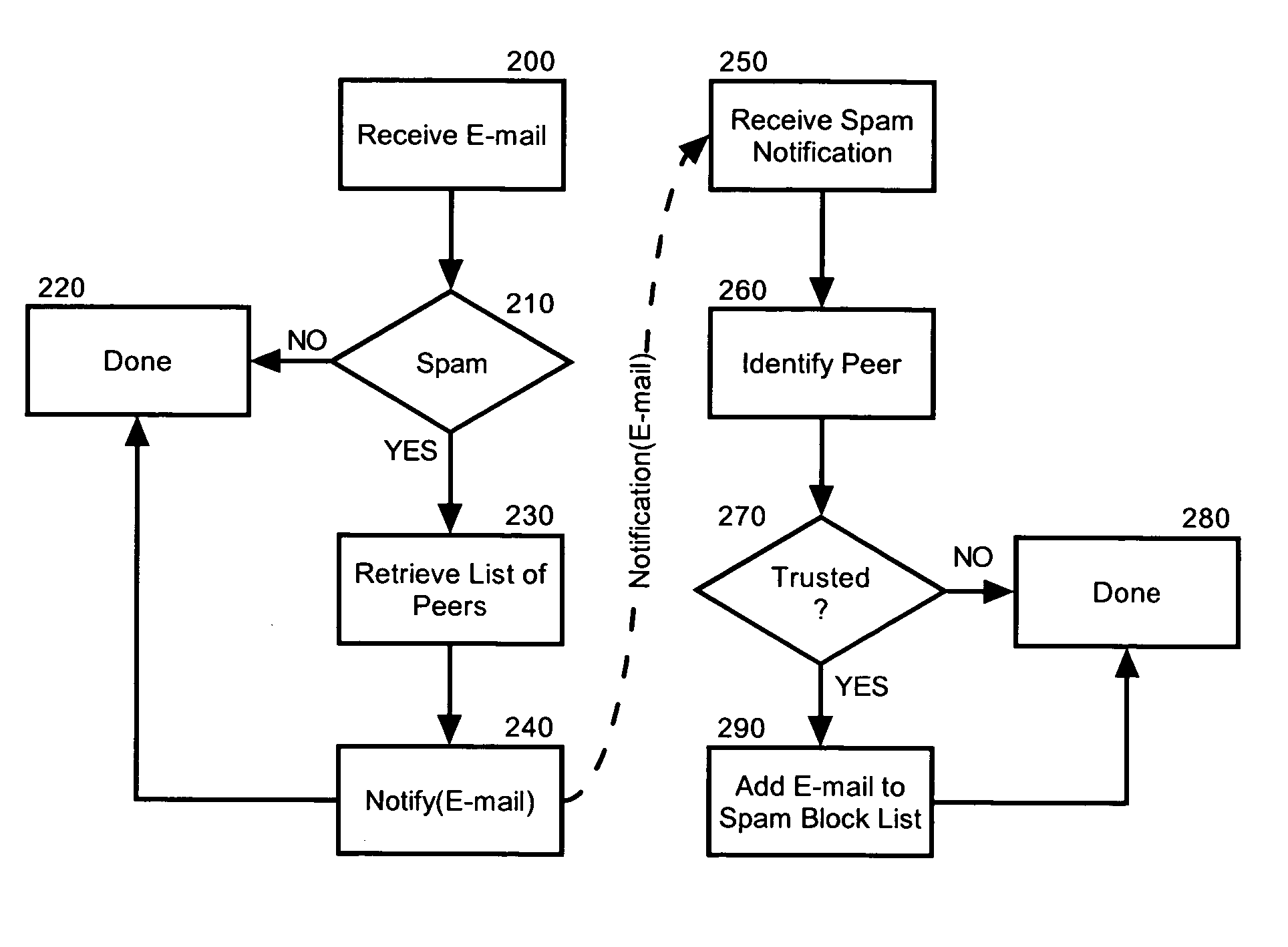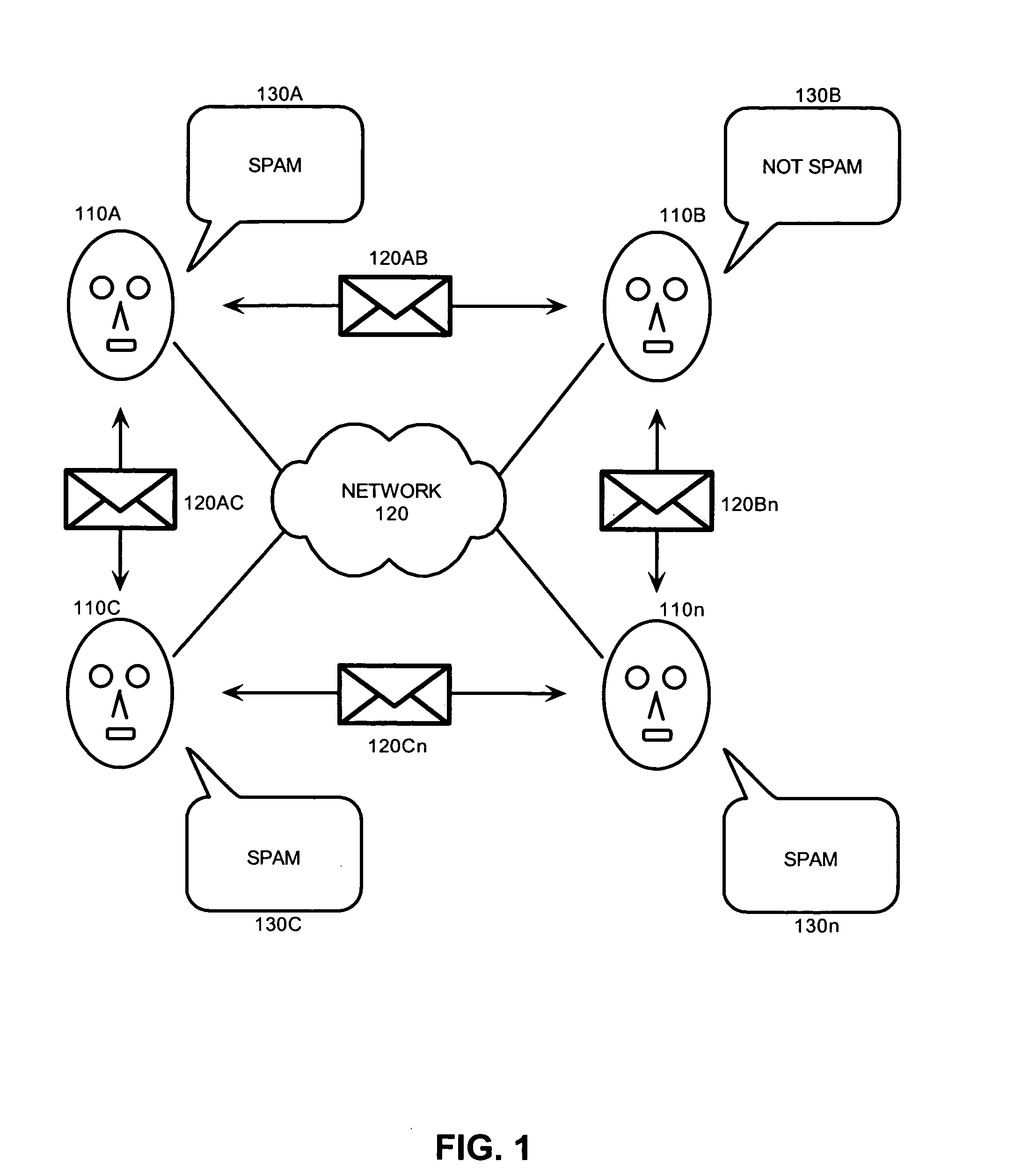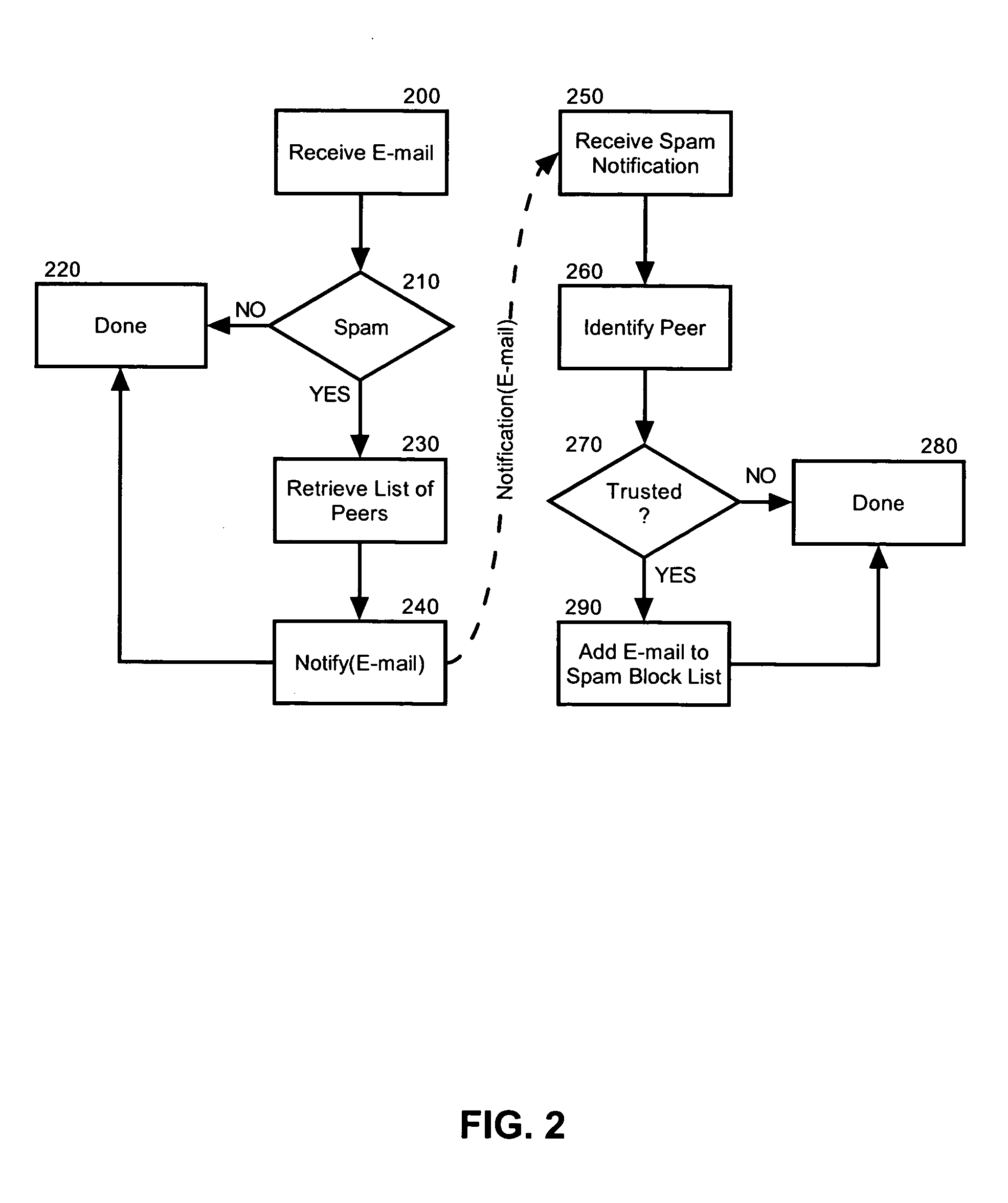Cooperative spam control
a technology of spam control and cooperative cooperation, applied in the field of spam filtering and control, can solve the problems of unsolicited commercial electronic mail, an annoyance to consumers worldwide, and the general practice of junk mail recipients, which is referred to as “spam” and remains an annoyance to consumers
- Summary
- Abstract
- Description
- Claims
- Application Information
AI Technical Summary
Benefits of technology
Problems solved by technology
Method used
Image
Examples
Embodiment Construction
[0021] The present invention is a method, system and apparatus for cooperative spam processing. In accordance with the present invention, members of a computing group can cooperate in sharing the identification of received e-mail as spam. Specifically, as individual members in the computing group identify spam, the individual members can notify other members in the computing group of the identity of the spam. The other members, upon receipt of the identified spam, individually can choose to ignore the e-mail message, thus capitalizing on the shared spam knowledge. Otherwise the other members can individually choose to ignore the spam determination. In either case, the collective spam knowledge of the computing group can be shared to more accurately identify spam among legitimate e-mail.
[0022]FIG. 1 is a schematic illustration of a system, method and apparatus for cooperative spam processing in accordance with the inventive arrangements. As shown in FIG. 1, peer participants 110A, 1...
PUM
 Login to View More
Login to View More Abstract
Description
Claims
Application Information
 Login to View More
Login to View More - R&D
- Intellectual Property
- Life Sciences
- Materials
- Tech Scout
- Unparalleled Data Quality
- Higher Quality Content
- 60% Fewer Hallucinations
Browse by: Latest US Patents, China's latest patents, Technical Efficacy Thesaurus, Application Domain, Technology Topic, Popular Technical Reports.
© 2025 PatSnap. All rights reserved.Legal|Privacy policy|Modern Slavery Act Transparency Statement|Sitemap|About US| Contact US: help@patsnap.com



